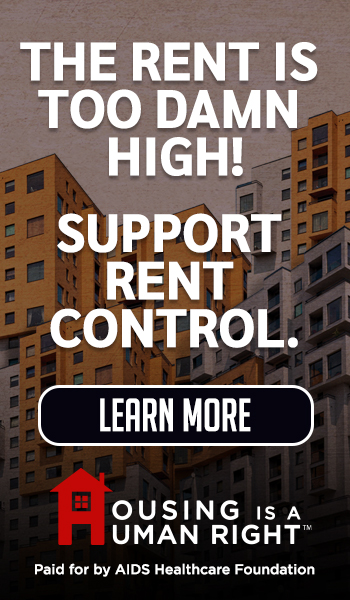Comments
iAUDIT! - A few days ago, the City erased crosswalks painted by a Sawtelle community group near Stoner Park. The group painted the crosswalks after their pleas to install them went unheeded by the city, despite the park’s heavy use by children and a history of accidents on the surrounding streets. Rather than completing a haphazard project, the Sawtelle group worked with the Crosswalk Collective to ensure the crosswalks met industry standards and current traffic codes. The DIY crosswalks put the City in a no-win situation; if it allowed them to remain, then the City would be potentially liable for any pedestrian/vehicle accidents. If the City removed them, it would seem wasteful and indifferent to resident needs. If the city has the resources to remove a crosswalk, it stands to reason it should be able to install them. The crosswalk controversy was just the latest in a long history of the city seemingly having its priorities backwards, protecting the status quo rather than responding to the needs of its residents. As I wrote in 2023, residents have been forced to become “DIY advocates”, fighting the city that should represent them.
The latest, and more egregious, example of the city being tone deaf to its residents’ interests occurred in the quiet halls of a federal courthouse. If you haven’t already heard, news broke late last week that the City of Los Angeles is appealing federal Judge Davd O. Carter’s order to appoint a monitor to oversee the accuracy and veracity of City and LAHSA homelessness reports. The order came was the result of a series of hearings that included a week’s worth of testimony from plaintiff witnesses and City representatives. Judge Carter agreed with the plaintiffs, the LA Alliance for Human Rights, that “The city flouted responsibilities by failing to provide accurate, comprehensive data when requested and did not provide evidence to support the numbers it was reporting”. Skimming the court transcripts, one can see how the court-appointed audit firm Alvarez & Marsal (A&M) showed neither the City nor LAHSA could prove they know how many people they have sheltered or housed, or long they have stayed sheltered. A&M’s report was consistent with a November 2024 audit from the L.A. County Auditor-Controller showing LAHSA paid providers without proof of performance; indeed, it paid some providers before properly executing service contracts.
Reviewing the transcripts also reveals the City didn’t refute A&M’s findings. At no time during the testimony did the city provide a response to what A&M described as a dysfunctional system, where the priority is paying providers regardless of performance, or the lack thereof. Among many serious problems, A&M found some shelters lacked operable showers, while one provider charged for three meals per day but served only two. A&M’s assessment exposed a system where providers were allowed to define their own performance standards, and outcomes were largely ignored.
Instead, attorneys for the city’s high-priced outside counsel, Gibson Dunn & Crutcher, objected to nearly every question posed by the Alliance’s lawyers, or to the answers given by its witnesses. Judge Carter overruled nearly every objection, resulting in an unnecessarily long hearing process that cost the City $1,000 per hour. In a classic case of “be careful what you ask for”, during the May 27 hearing, an attorney for the city objected to the admission of A&M’s report (page 187) because it wasn’t an “official” audit, even though the City agreed to the review's scope and agreed to pay for it. The attorney said it wasn't a "forensic audit". Overruling the objection, the judge asked the city's lawyer if the city was prepared to submit to a forensic audit. The city's attorney quickly said no and moved on.
Rather than offering experts to refute A&M’s report, the city’s lawyers spent most of their time trying to impugn the A&M team’s skills and experience, again despite the city agreeing to use A&M after a competitive process to select a review firm. Most of the city’s witnesses, on the other hand, were managers of the very programs A&M found to be deficient. In an especially odd turn, the city objected to calling the mayor and councilmembers because they were “apex” leaders, or so high up the chain of command, their expertise was replicated by those lower down the hierarchy. However, managers execute the policies approved by our elected officials, so hearing from them could have offered insights into the process that created the broken system we have now. It seems strange the mayor or Councilmembers can do a controlled press event but cannot be called to account testifying in open court.
The constant string of objections made it abundantly clear the city made the decision to appeal the case long before Judge Carter issued his order. Objecting creates a foundation for alleging bias or a procedural failure by the judge. But why would the city appeal? After all, it agreed to the review last year and agreed to the selection of A&M from three candidate firms. During the course of the review, A&M stated several times it had difficulty getting the City to provide requested documents, so if the report was substandard, partial responsibility lies with the city itself. As an A&M witness testified, neither the city nor LAHSA refuted any of its findings. As Judge Carter wrote in his June 24 decision, “When data inconsistencies or compliance issues arise, the City points to LAHSA. In turn, LAHSA attributes its problems to a lack of information or cooperation from the City. This dynamic has fostered a system in which responsibility is routinely deflected, allowing both entities to evade accountability, with no single party willing to take responsibility”. Why, then, would the city appeal his decision?
I am a great believer in Occam’s Razor, that the simplest answer to a problem is usually the correct one. The city is caught between two equally bad options: it can either admit A&M’s report was correct and submit to a monitor, or it can expend more taxpayer money trying to continue its strategy of staving off accountability. To admit failure also means admitting billions of dollars spent on homelessness have had no discernible benefit, primarily because of poor management. By extension, it is also an admission of a failure of ideology, that the entire premise of Housing First is based on a foundation of sand. To choose to appeal means defending systemic failure, but it is also a triumph of ideology over reality. By saying A&M’s findings were the exception to the rule, the city continues the myth its programs are effective. We saw this idea in action when LAHSA released its 2025 PIT count on July 14, claiming two years’ of minor and highly suspect reductions indicate a trend in declining homelessness. As I pointed out on July 21, the reduction is neither sustainable nor verifiable. A competent monitor would find the same problems A&M and many other agencies found; Judge Carter’s decision included a long history of poor performance documented over 20 years (pp. 11 through 15). Stated plainly, the city appealed because it had to; to do otherwise would mean 20 years of spinning the facts was really just an attempt to redefine failure as success, something Housing First ideologues cannot allow.
The city’s appeal also exposes another consequence of adhering to one ideology; the arrogant conviction that belief is more important than reality. In this world, the expense of hundreds of thousands of taxpayer dollars for an appeal pales compared to the need to defend the status quo. Local governments have spent billions on programs that don’t work; a few hundred thousand more is a pittance if it can sustain the status quo for a few more years. We see this arrogance whenever someone like Councilmember Raman talks about homelessness--she usually speaks in abstract terms that frame homelessness as an economic issue; that approach justifies her refusal to take any substantive action on encampments or derelict RV’s in her district. We saw this arrogance on display at the press conference for the PIT count, where Mayor Bass and former LAHSA CEO Dr. Adams Kellum made grand pronouncements about reducing homelessness, while ignoring the fact its still higher than it was a few years ago, despite huge infusions of taxpayer money.
In fact, the ideologically-driven arrogance is so powerful, a reasonable person should take any statistical report from the city with a large dose of salt. A city that is willing to spend money defending the indefensible would think nothing of doctoring numbers or ignoring negative statistics. Indeed, whistleblowers have alleged LAHSA’s leadership withheld accurate data about the city’s Inside Safe program because it would have made Mayor Bass “look bad”. Leaders have created their own reality where the inconvenient needs of their constituents have no place, and they will fiercely defend that reality against any assault by real life. But not listening to constituents has its risks. It can put a city in the position of choosing to allow unapproved crosswalks to exist or using its resources to erase them. It can also put it in the position of using taxpayer money to defend an untenable situation. Instead of bringing accountability to homelessness programs, the city’s resistance is nothing more than an attempt to perpetuate a broken system that serves only its advocates.
(Tim Campbell is a longtime Westchester resident and veteran public servant who spent his career managing a municipal performance audit program. Drawing on decades of experience in government accountability, he brings a results-driven approach to civic oversight. In his iAUDIT! column for CityWatchLA, Campbell emphasizes outcomes over bureaucratic process, offering readers clear-eyed analyses of how local programs perform—and where they fall short. His work advocates for greater transparency, efficiency, and effectiveness in Los Angeles government.)






